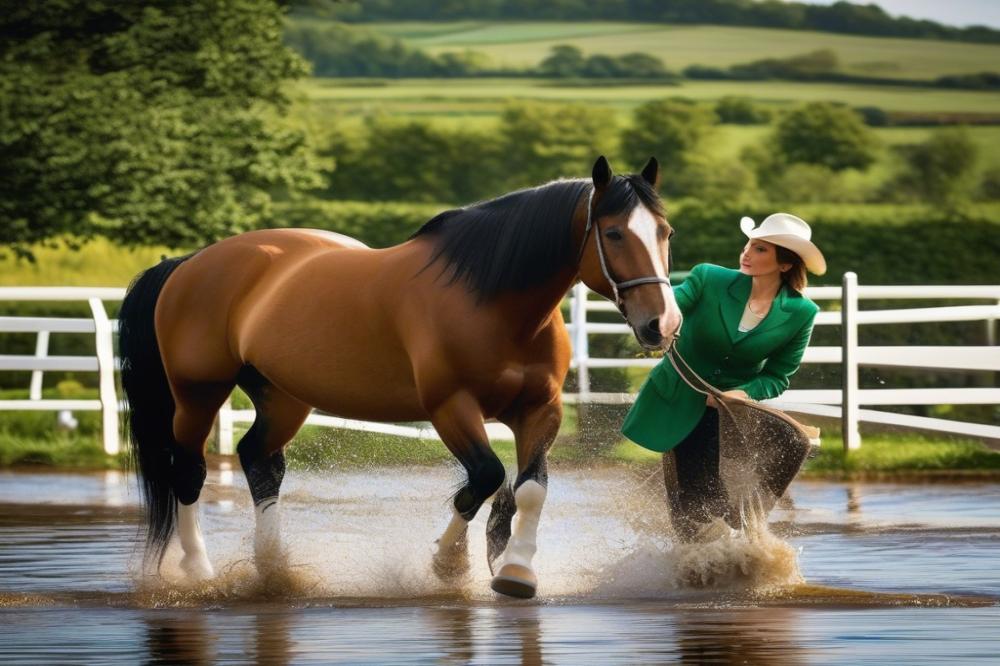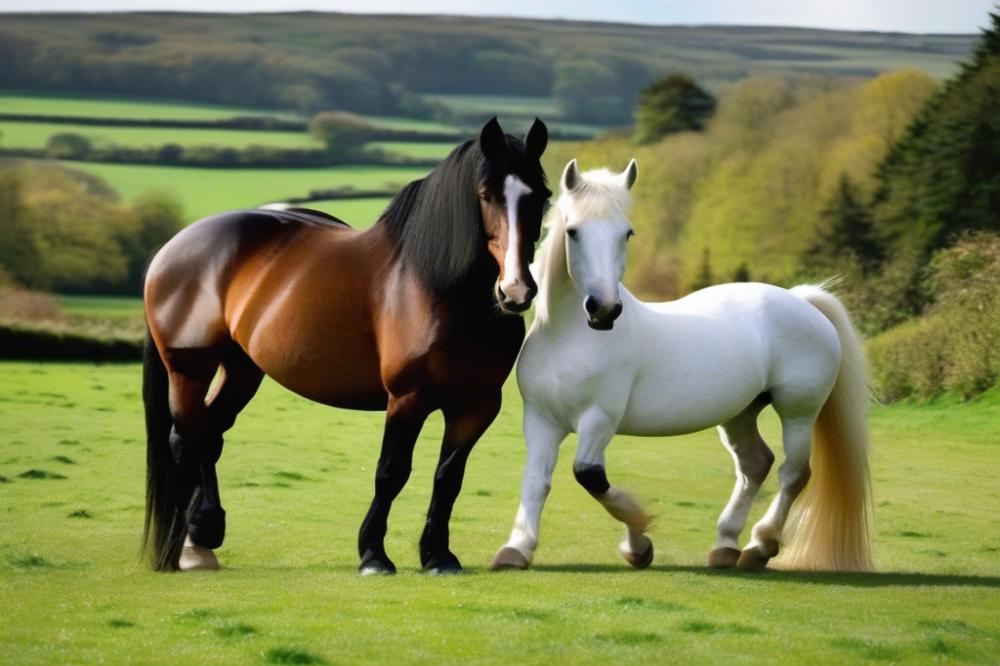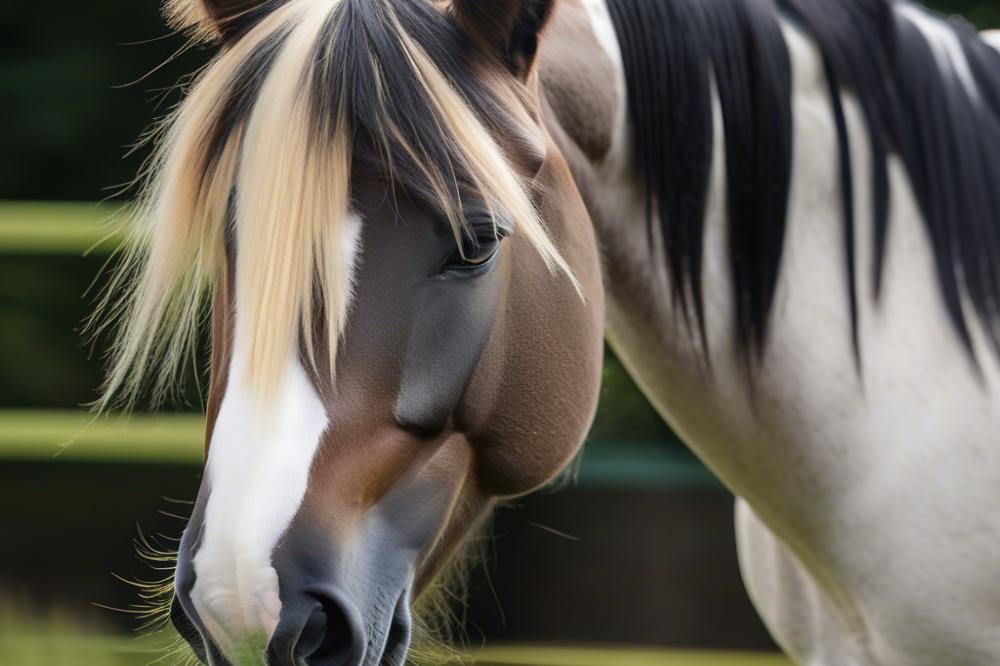Overview of the Irish Cob and American Quarter Horse
When you imagine a sturdy, reliable horse, the Irish Cob often comes to mind. This breed, with its strong build and flowing mane, has roots that reach deep into Irish history. Known for its remarkable temperament, the Irish Cob is often seen trotting gracefully through the lush green fields of the Emerald Isle. They are versatile animals, capable of pulling heavy loads and excelling in various disciplines. On the other side of the globe, we have the American Quarter Horse, regarded as one of the most popular equine breeds in the United States. With a reputation for speed and agility, this horse excels in shorter distances, often leaving other horses in the dust. It’s not uncommon for them to be utilized in rodeos, barrel racing, and even ranch work, where their quick bursts of speed truly shine.
Importance of the Crossbreed for Equestrians
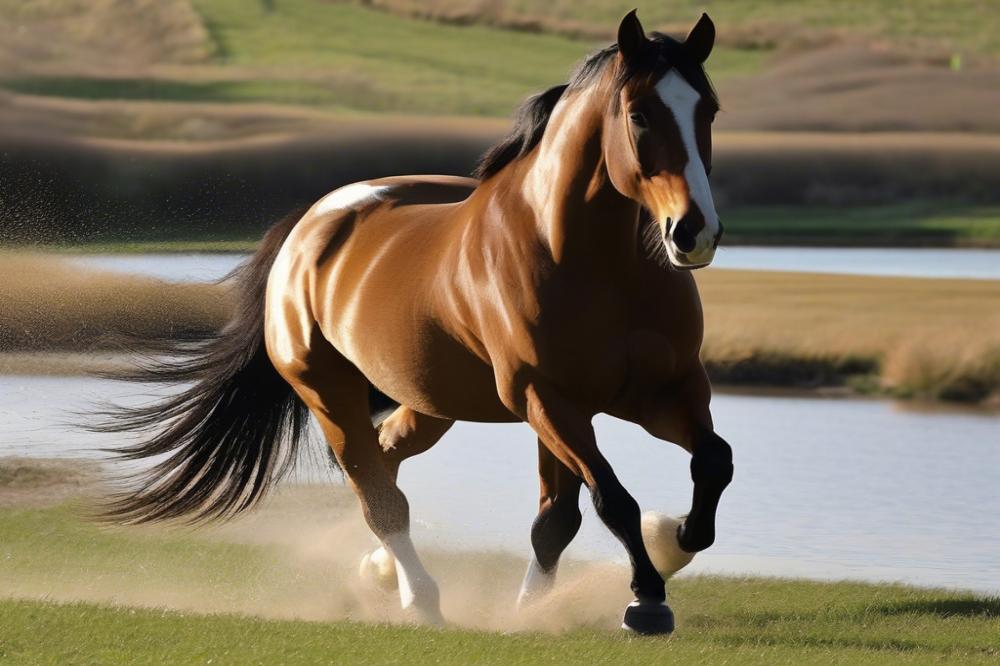
Crossbreeding these two extraordinary breeds has become a growing trend among equestrians. The combination of the Irish Cob’s strength and the Quarter Horse’s speed can result in a horse that is not only powerful but also eager to please. This blend can lead to fantastic all-around mounts that are suitable for various activities. Think of it like making a stew: when you combine quality ingredients in the right proportions, the outcome can be much better than each individual element alone. Equestrians looking for a horse that can handle different activities—whether it’s jumping, trail riding, or even just light work around the barn—might find this hybrid to be the perfect companion.
Purpose of the Article
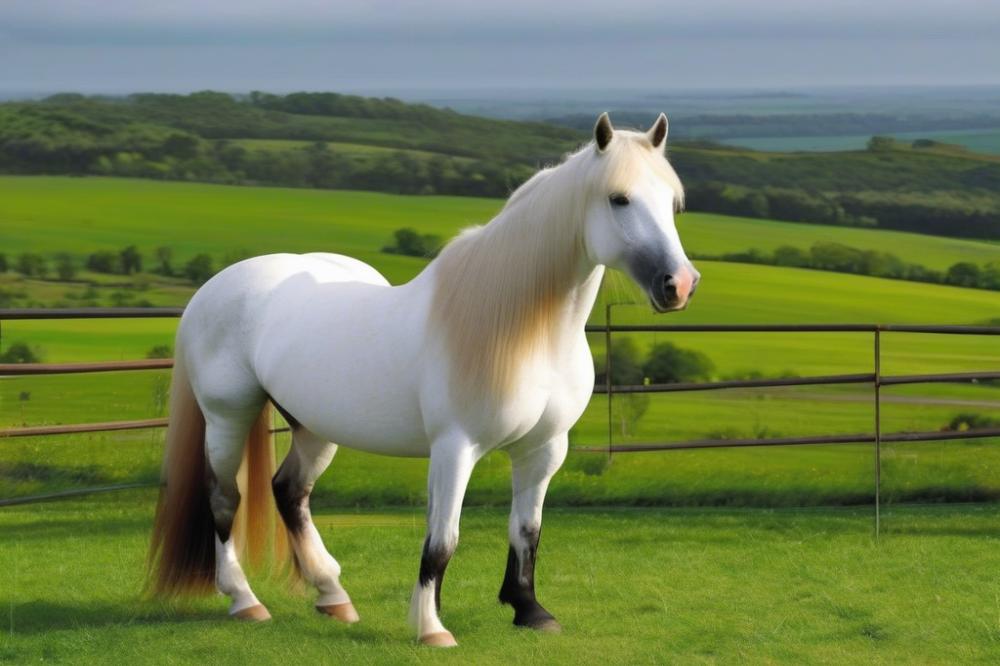
In this article, we will dive deeper into the fascinating world of crossbreeding, particularly focusing on the Irish Cob and American Quarter Horse cross. We’ll explore how horse care and proper breeding techniques can significantly impact equine genetics. For anyone interested in horses, understanding how different breeds may complement each other is essential. After all, one never knows if their future horse may end up being a blend of moose vs horse speed! Join us as we unravel the benefits, challenges, and joys of creating a new lineage in the world of horse breeding. Learning about this can be like navigating the diverse breeds of horses in the UK—there’s always something new to discover!
Background on the Irish Cob
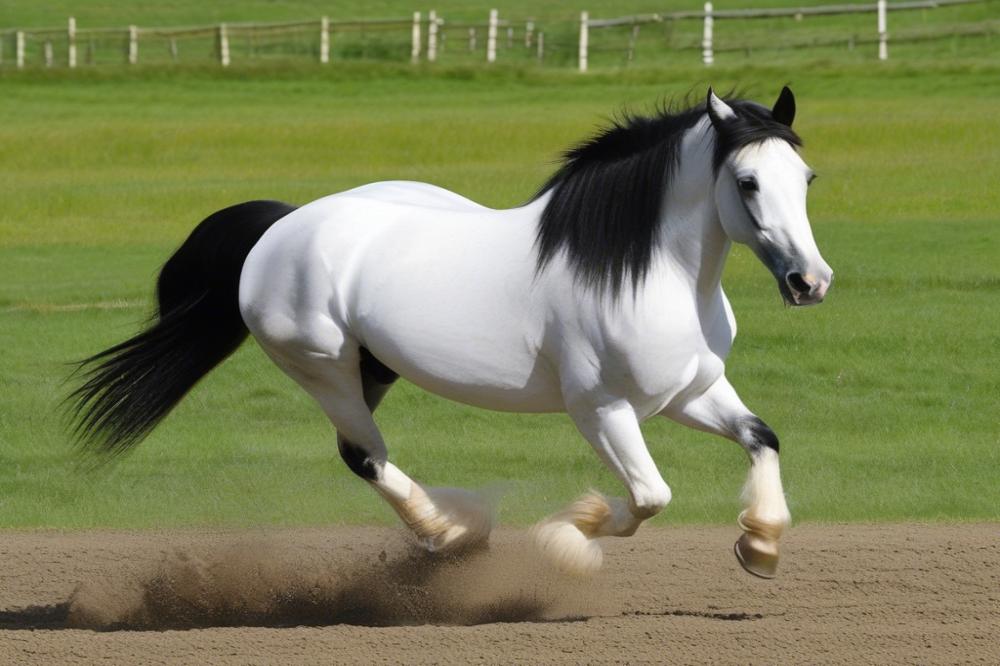
Origin and history of the Irish Cob
The Irish Cob, also known as the Gypsy Vanner, has roots that trace back to the followers of the Romani people in Ireland. These horses were bred to pull traditional caravans. Over the years, they became a symbol of beauty and strength. They were valued not just for their pulling power but also for their kind temperament. Irish Cobs have been part of the culture, and their history is rich with stories of hard work and good companionship.
Characteristics and traits
When you look at an Irish Cob, you notice their distinct appearance. They typically have a well-muscled body and a thick mane and tail. These horses can come in various colors, but many are piebald or skewbald. Their feathers, or long hair on their lower legs, give them a striking look. Besides their looks, Irish Cobs are known for their gentle nature. They are patient, making them great for both beginners and experienced riders. Because of their sturdy build, they can handle a variety of activities.
Uses and disciplines
Irish Cobs shine in many disciplines. They are often seen in pulling competitions but can also excel in dressage and show jumping. Riders appreciate their versatility. Some use them for trail riding due to their calm demeanor, while others enjoy driving them. Horse care for an Irish Cob is straightforward, but regular grooming helps maintain their lovely coat and feathers. Whether you’re watching them in shows or riding on a sunny day, these horses truly impress. Crossbreeding them with the American Quarter Horse can bring exciting possibilities. With careful equine genetics in mind, this mix might produce an exceptional equine with a blend of both breeds’ best qualities.
Background on the American Quarter Horse
Origin and History of the American Quarter Horse
The American Quarter Horse has roots stretching back to the early days of America. Around the 1600s, colonists began breeding horses for speed and utility. These early horses were a mix of Spanish breeds and local stock. As time passed, the demand for quick and agile horses grew, especially for racing. The breed got its name from its ability to outrun others in short, quick sprints—often just a quarter of a mile! With this history of equine breeding, the Quarter Horse evolved into a reliable companion for ranchers and cowhands.
Characteristics and Traits
American Quarter Horses are known for their muscular body and strong hindquarters. This physical build helps them excel in racing and rodeos. They usually stand between 14.3 to 16.2 hands tall and can come in many coat colors. These horses often have a gentle demeanor, making them great for riders of all ages. Their intelligence and cooperative nature make them easy to train. When it comes to horse care, they tend to have good health and longevity, which is a big plus for any horse owner.
Uses and Disciplines
The versatility of the American Quarter Horse is impressive. They participate in a variety of activities, from barrel racing to jumping. Ranch work is another area where they shine, showing off their cattle handling skills. Many folks also enjoy pleasure riding with these horses due to their calm nature. Because of their powerful build and agility, they are also popular in competitive rodeos. Whether a rider enjoys speed or stability, there’s a place for Quarter Horses in most disciplines.
Crossbreeding can produce offspring that combine the best traits of both parents. Adding an Irish Cob into the mix creates an interesting fusion. This cross could enhance versatility while maintaining strong genetic qualities. So, thinking about the opportunities in equine genetics? The possibilities might just be fascinating!
Benefits of Crossing the Irish Cob with the American Quarter Horse
Unique Traits of the Crossbreed
Bringing together the Irish Cob and Quarter Horse creates an interesting mix. This combination blends strength with grace in a horse that can tackle various tasks. Often, you’ll see a cross that embodies the best traits from both breeds. Many appreciate the sturdy build of the Irish Cob alongside the athleticism and quickness of the Quarter Horse. You might find a horse that’s not just good for riding but also excels in work and leisure.
Possible Improvements in Temperament and Versatility
Temperament is often a hot topic in equine breeding discussions. A cross between these two breeds might produce a horse that is calm yet energetic. Irish Cobs are known for their gentle nature, while Quarter Horses tend to be eager to please. This mix may result in a companion that is friendly, cooperative, and keen to learn new skills. What’s not to love about a horse that can switch from trail riding to working cattle without missing a beat? With a solid foundation in horse care, breeds like these can be trained for diverse activities—from recreational riding to more demanding disciplines.
Physical Attributes of the Irish Cob and Quarter Horse Cross
When it comes to looks, this cross can be quite impressive. The muscular build of the Irish Cob paired with the sleek lines of the American Quarter Horse often create a very appealing sight. Their coats can be various colors, offering a feast for the eyes. Many crossbreeds possess a thick mane and tail, a characteristic nod to their Irish heritage. As these horses mature, their strong legs and broad chests make them capable of endurance while providing a comfortable ride. It’s not uncommon for enthusiasts to admire their natural athleticism while just hanging out at the barn.
Considerations for Breeding Irish Cob and Quarter Horse Crosses
Best Practices for Breeders
Breeding horses is both an art and a science. It’s crucial to plan every detail. Start by studying equine genetics. Knowing the traits of each breed helps to predict the results. For instance, Irish Cobs are known for their strength and charm, while Quarter Horses excel in speed and agility. A good combination of these qualities can create fantastic offspring.
Communication is key when working with other breeders. Share insights and experiences. You might stumble upon new techniques or ideas that could greatly help your breeding program. Plus, having a community can ease those seeking advice. Don’t hesitate to ask for tips on horse care or improve your breeding methods.
Health Considerations and Genetic Factors
It’s important to consider health issues when mixing breeds. Crossbreeding can lead to a variety of genetic outcomes. Some traits may be desirable while others can introduce challenges. Research both breeds thoroughly. Understand common health issues in Irish Cobs and Quarter Horses. This way, you can work to avoid passing on any pesky problems.
Regular vet check-ups are also essential. Keeping an eye on the health of both sire and dam helps prevent issues down the line. Remember, you want the foal to start life in the best condition possible. Genetic testing can also reveal a lot about potential concerns and provide peace of mind.
Selecting the Right Parent Horses
When choosing parent horses, focus on their temperaments and skills. Look for those who perform well in their respective disciplines. A calm and friendly Irish Cob can help balance out a more spirited Quarter Horse. Temperament plays a big role in how babies adapt to training. Imagine a hot-headed foal! You can prevent that by picking a steady parent.
Experience matters too. A seasoned horse may have more valuable traits to pass on. Keep in mind that riding styles and abilities vary significantly. So, consider what you want in your cross. Are you after a loving companion or a high-energy partner? Make a list of qualities that matter most.
Finding the right mix can be tricky, but rewarding. The goal is to produce something that reflects the best of both worlds. Enjoy the journey of discovering how these two breeds can come together. Happy breeding!
Training and Care for the Irish Cob and Quarter Horse Cross
Training Methods and Techniques
Training this special crossbreed can be quite the adventure. Each horse has its own personality, often blending the spirited nature of the Quarter Horse with the calm demeanor of the Irish Cob. Start with basic ground work. Simple exercises help with building trust. A soft approach works wonders, especially when the horse gets nervous.
When riding, focus on clear signals. These horses tend to respond well to gentle, consistent cues. Incorporate variety to keep things interesting. Transitioning between different activities can maintain their motivation. Remember, patience is key! Building trust takes time. It’s not a race; it’s about the journey.
Common Challenges Faced
Every horse has its quirks, and this cross is no different. One challenge might be the mix of temperaments. Some days, they may show a stubborn streak inherited from the Irish Cob side. Other days, they might surprise you with bursts of energy typical of the Quarter Horse.
Handling these ups and downs requires a flexible approach. One day you might need to be firm, while another might call for a more laid-back strategy. Additionally, their strong build means that proper balancing during riding is crucial. It’s all about finding that sweet spot between discipline and encouragement.
Care Requirements for the Crossbreed
Horse care for this breed mix involves attention to diet, exercise, and health. Both parents have a robust genetic background, so they typically thrive on good nutrition. A well-balanced diet with plenty of hay and grains should be on the menu. Talk to a vet to tailor their feeding plan based on their weight and activity level.
Regular exercise is vital, too. Ensuring they have enough space to run and play is key to their well-being. Daily routines keep them fit and happy. Grooming should not be overlooked. The Irish Cob coat can be thick and requires regular brushing. Who doesn’t love a shiny coat?
Keep an eye out for any health issues. Some common concerns with this type of mix can include joint problems. Regular check-ups can help prevent minor issues from escalating. Plus, spending time together strengthens the bond. After all, who doesn’t want a trusty steed by their side?
Success Stories and Testimonials
Examples of Successful Crosses
Many horse enthusiasts rave about their Irish Cob and Quarter Horse cross. These hybrids have garnered a reputation for being athletic and capable. Often seen strutting their stuff in various disciplines, these horses are known for their versatility. One owner said, “My horse can do a little bit of everything. One minute he’s jumping, and the next he’s trotting beautifully in the ring!”
Breeders are witnessing how well these horses perform. With endurance from the Irish Cob and speed from the Quarter Horse, this combination often leads to impressive results. Riders appreciate how the cross can tackle muddy trails or shine in a dressage show. “He’s got the best of both worlds,” a breeder remarked, smiling at his healthy, shiny mare.
Personal Stories from Breeders and Owners
Personal stories make it clear that these crosses have a special charm. One family loves their pony-sized cross for her gentle temperament. Kids adore her! She allows them to learn the ropes of horse care without fear. “She’s so patient,” a parent said, proud of their child’s riding progress.
Another owner shared, “I never realized how much personality my horse would have!” He explained how his horse was not just a great ride but also a wonderful companion. Many owners cherish the bond they form with their unique horses. It becomes quite the joy at the end of a long day to spend time brushing or simply hanging out with them.
Performance in Various Equestrian Disciplines
These horses do not just shine in one area, either. They successfully participate in numerous equine disciplines. It’s common to spot them in jumping events, barrel racing, and even Western pleasure classes. One rider said, “I took my cross to a local show, and we won first place. I couldn’t believe it!”
Crossbreeding has the potential to produce an amazing competition partner. Skills from both breeds complement each other. Balance, agility, and strength can make a noticeable difference in performance. Riders often find their horses eager to learn new things. In no time, they can master new skills and techniques.
With each story, it’s easy to see why the Irish Cob and Quarter Horse cross is appreciated. They bring joy and success, not just to their owners but also to all who encounter them. The charming combination of traits makes these horses truly stand out in the equine world.
Bringing It All Together
Let’s wrap things up and reflect on what we’ve discovered about the exciting blend of the Irish Cob and the American Quarter Horse. This crossbreed brings forth the strong, sturdy nature of its Irish heritage along with the nimbleness and versatility associated with Quarter Horses. Riders and trainers have the chance to enjoy the best of both worlds: a reliable partner with stamina that can tackle a variety of tasks. Imagine a horse that can pull a cart with strength yet is also graceful enough for a leisurely trail ride — that’s a win-win in anyone’s book.
Moving forward, there’s a bright future for the enthusiasts of this unique cross. As more people become aware of its advantages, the demand for these horses is likely to grow. This could lead to interesting developments in breeding techniques and training methods. Just think about the numerous possibilities that lay ahead! Possessing both agility and a gentle demeanor, these horses might also find their niche in various disciplines, from recreational riding to more serious pursuits.
For those contemplating entering the world of breeding or training, it’s truly an exciting venture. The journey may present challenges, similar to the differences found in draft horse vs quarter horse debates, yet, isn’t that what makes it rewarding? Each step taken, whether gentle or brisk, adds to the experience. So, if you have an interest in this cross, don’t hesitate to dive in. Remember, every great equestrian story begins with a single hoofprint.
Moreover, keep in mind that learning about horse halter types can help you when it comes to training and handling these lovely creatures. From simple leads to more complex gear, the right equipment makes a difference. Embrace the adventure that awaits, and you may just find yourself forging a special bond with a horse that carries both spirit and strength.
So, here’s to the thrill of working with the Irish Cob and Quarter Horse cross! May your future rides be smooth, your training sessions enjoyable, and your equestrian journey fulfilling.

